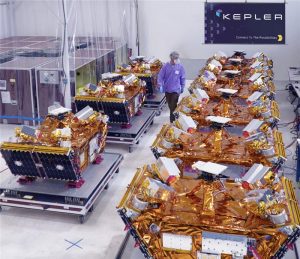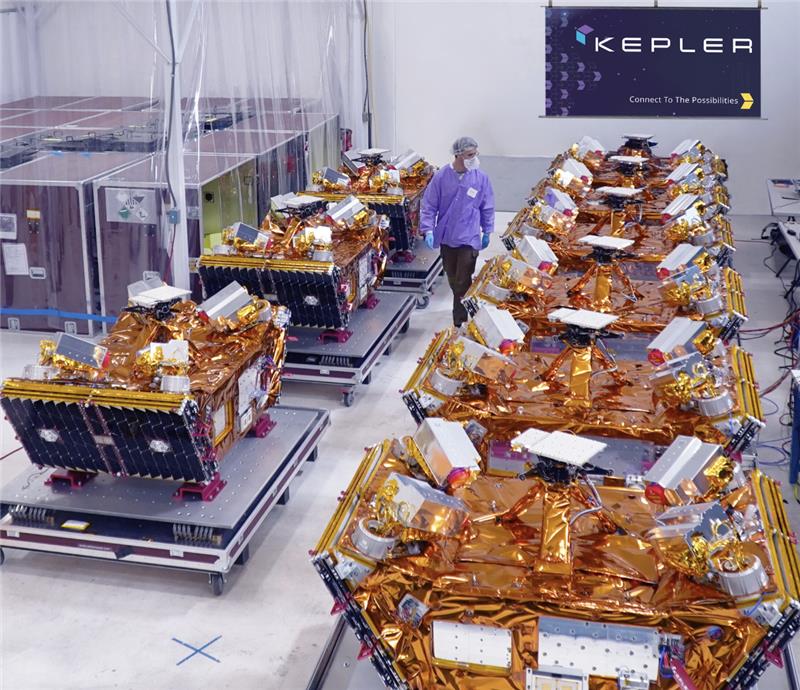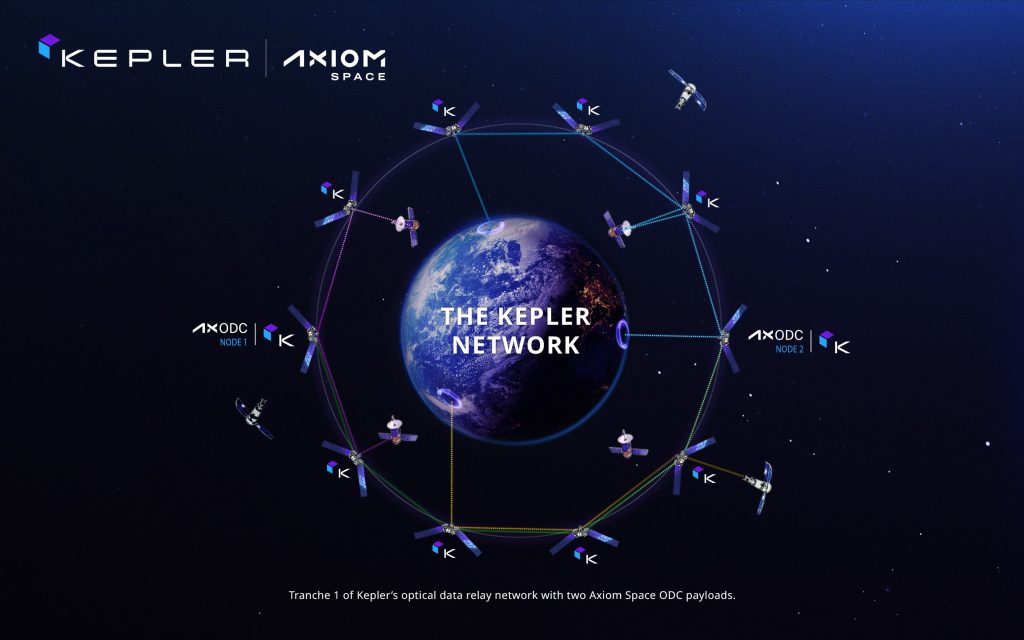TORONTO, ONTARIO – April 10, 2024 – Kepler Communications, Inc. has entered into an agreement with TESAT-Spacecom and Airbus Defence and Space to develop a high bandwidth optical communications network in low Earth orbit (LEO) to address emerging opportunities such as the European Space Agency’s (ESA) High Throughput Optical Network (HydRON) program. This marks a significant milestone toward the development of terabit-class optical networking in space.
Led by Kepler, the companies are collaborating to deliver real-time optical communications to the market, leveraging the strengths of each entity to provide an innovative solution for key opportunities such as HydRON. The project will demonstrate the world’s first operational optical multi-orbit transport network, enhancing the capabilities of spaceborne and terrestrial networks.
Under the agreement, Kepler is spearheading the effort, delivering expertise in spacecraft constellation design, manufacturing, and operation, building on the technologies within its commercial space segment and existing ground segment. TESAT is contributing expertise in space optical and network payload development, while Airbus is leveraging its expertise in optical communication by contributing operational and system engineering know-how as well as access to optical ground stations to the project.
“Kepler’s mission to build the Internet for Space is well-positioned to support HydRON’s objective to demonstrate ‘Fibre in the sky,’ extending Internet connectivity to space,” said Mina Mitry, chief executive officer and co-founder of Kepler. “This collaboration enables the development of terabit-per-second data relay in space, with a state-of-the-art optical network architecture that gives European and Canadian forces secure access to spacecraft data with sub-second latency.”
Kepler is leveraging technology currently being developed for their LEO optical data relay network, The Kepler Network. The company launched its first two optical pathfinder satellites in late 2023 and expects its first full tranche of optical satellites to be launched and operational by 2025, providing services to both commercial and government partners.
TESAT is a technology and market leader in laser communications for space. In a dedicated space factory, a production line for Scalable Optical Terminals (SCOT) is established and delivers flight units of the SCOT series continuously. Since 2016, the company has had operational terminals in orbit, covering distances up to 45,000 km.
“Joining forces with Kepler and Airbus accelerates the advancement and adaptation of optical communications, setting the stage for a new era in space communication by providing unprecedented data throughput and reliability,” stated Thomas Reinartz, CEO at TESAT-Spacecom.
Pioneering the advancement of space for more than 50 years, Airbus is renowned for its range of trusted solutions for customers around the world that bring the benefits of space down to Earth.
“Our collaboration with Kepler and TESAT on the HydRON opportunity exemplifies our commitment to innovation and our role in shaping the future of European and global telecommunications, ” said Philippe Pham, Senior Vice President Telecoms & Navigation Systems at Airbus. “Our team is proud to develop a new generation of optical communications technology in space.”
The partnership is dedicated to delivering a comprehensive and compelling proposal to ESA, driving forward the evolution of optical space and ground network capabilities.
________________________________________________________________
ABOUT KEPLER
Kepler Communications, Inc. is a satellite telecommunications provider on a mission to build the Internet for space. Incorporated in 2015, Kepler provides real-time, continuous connectivity for space communications, abolishing barriers to make space-generated data universally available. The company is vertically integrated, with an in-house production facility allowing satellites to be designed and built on-site. The Kepler Network will initially service low Earth orbit (LEO) and plans to provide connectivity services to space missions in LEO, MEO, GEO, and beyond. Headquartered in Toronto, Canada, Kepler is building a global company to enable communications for the future space economy. To learn more about Kepler, please visit www.Kepler.space.
ABOUT TESAT-SPACECOM
At TESAT in Backnang, more than 1,100 employees develop, manufacture and distribute systems and equipment for telecommunications via satellite. The product range spans from smallest space-specific components to modules, entire assemblies or payloads. As the world’s only provider and technology leader of in-orbit-verified optical communication terminals (OCTs) for data transmission via laser, TESAT has a focus on commercial and institutional space programs. More information at www.tesat.de
ABOUT AIRBUS
Airbus pioneers sustainable aerospace for a safe and united world. The Company constantly innovates to provide efficient and technologically-advanced solutions in aerospace, defence, and connected services. In commercial aircraft, Airbus offers modern and fuel-efficient airliners and associated services. Airbus is also a European leader in defence and security and one of the world’s leading space businesses. In helicopters, Airbus provides the most efficient civil and military rotorcraft solutions and services worldwide











